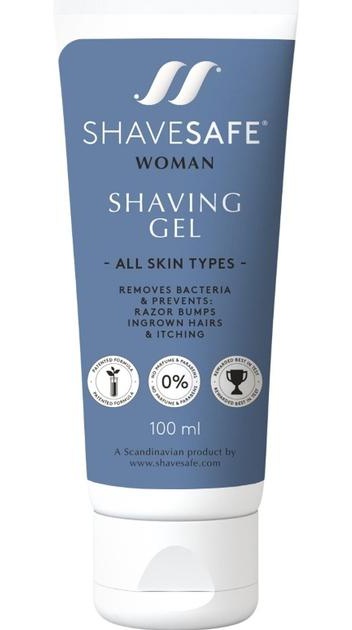
Highlights
Skim through
| Ingredient name | what-it-does | irr., com. | ID-Rating |
|---|---|---|---|
| Aqua | solvent | ||
| Cocamidopropylamine Oxide | surfactant/cleansing | ||
| Chlorhexidine Digluconate | antimicrobial/antibacterial, preservative | ||
| Poloxamer 237 | |||
| Hydroxyethyl Cellulose | viscosity controlling |
ShaveSafe Woman Shaving Gel All Skin TypesIngredients explained
Good old water, aka H2O. The most common skincare ingredient of all. You can usually find it right in the very first spot of the ingredient list, meaning it’s the biggest thing out of all the stuff that makes up the product.
It’s mainly a solvent for ingredients that do not like to dissolve in oils but rather in water.
Once inside the skin, it hydrates, but not from the outside - putting pure water on the skin (hello long baths!) is drying.
One more thing: the water used in cosmetics is purified and deionized (it means that almost all of the mineral ions inside it is removed). Like this, the products can stay more stable over time.
A secondary cleansing agent (co-surfactant) that's a good aid next to other (anionic) cleansing agents. It improves foam, the mildness of the formula and builds viscosity, pretty much all the things co-surfactants are used for.


A nice little helper ingredient that can thicken up cosmetic products and create beautiful gel formulas. It's derived from cellulose, the major component of the cell wall of green plants. It is compatible with most co-ingredients and gives a very good slip to the formulas.
You may also want to take a look at...
| what‑it‑does | solvent |
| what‑it‑does | surfactant/cleansing |
| what‑it‑does | antimicrobial/antibacterial | preservative |
| what‑it‑does | viscosity controlling |





